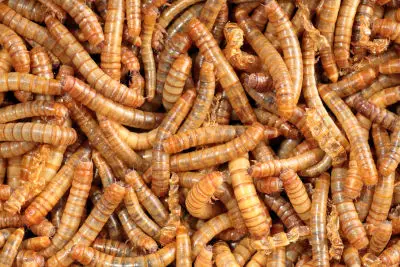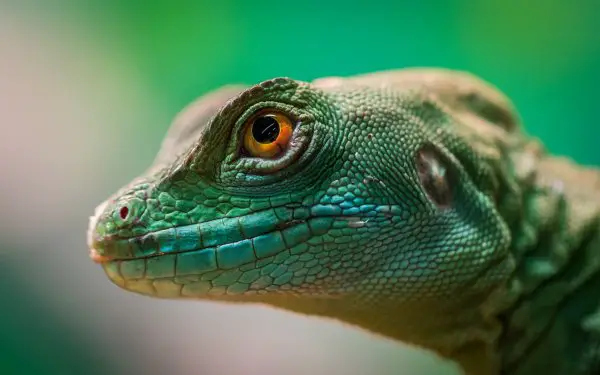What happens if you stamp on a lizard? The potential consequences of stepping on a lizard.
Stamping on a lizard may seem like an innocent act, but it can have serious consequences for the animal and potentially for the person doing the stamping. Lizards are small, delicate creatures that are easily injured or killed by rough handling. In this article, we will explore what happens if you stamp on a lizard and why it is important to avoid harming these fascinating creatures.
Lizards are a vital part of many ecosystems, playing important roles in controlling insect populations and serving as prey for larger animals. When a lizard is stamped on, it can suffer from broken bones, internal injuries, and other serious health problems. In some cases, the lizard may die as a result of the trauma. It is important to remember that even small actions can have a big impact on the natural world, and that we should always strive to treat all living creatures with respect and kindness.
| Are these foods dangerous for your Beardie? | |
| Avacado? Click here to learn, from this guide, if this food is dangerous |  |
| Superworms? Click here to learn, from this guide, if this food is dangerous |  |
By understanding the consequences of stamping on a lizard, we can take steps to protect these animals and ensure that they continue to thrive in their natural habitats. Whether you are a nature enthusiast, a pet owner, or simply someone who cares about the welfare of animals, this article will provide valuable insights into the importance of treating lizards and other creatures with care and compassion.
Immediate Consequences
Physical Trauma to the Lizard
Stamping on a lizard can cause immediate physical trauma to the animal. Depending on the force of the stamp, the lizard may experience broken bones, internal bleeding, or other injuries. These injuries can be fatal to the lizard, especially if it is a small or fragile species.
Lizard’s Defense Mechanisms

A green lizard staring.
When threatened, lizards have several defense mechanisms that they can use to protect themselves. If a lizard is stamped on, it may try to flee or hide. If it cannot escape, it may bite or scratch in self-defense. Some species of lizards can also change color or puff up their bodies to appear larger and more intimidating.
It is important to note that stamping on a lizard is not only cruel but also illegal in many areas. Lizards play an important role in their ecosystems and should be treated with respect and care. If you encounter a lizard, it is best to observe it from a distance and avoid disturbing it.
Legal and Ethical Considerations
Animal Cruelty Laws
When it comes to harming animals, there are laws in place to protect them from unnecessary suffering. In most countries, it is illegal to intentionally harm or kill an animal without a valid reason. This includes lizards, which are considered animals under the law.
If someone were to stamp on a lizard, they could potentially be charged with animal cruelty. The severity of the charges would depend on the extent of the harm caused to the lizard and the laws of the specific country or state.
Ethical Implications
Beyond the legal consequences, there are also ethical considerations to take into account. Many people believe that all animals have the right to live without unnecessary harm or suffering. This means that intentionally harming a lizard, or any other animal, is seen as morally wrong by many.
Furthermore, some people view lizards as valuable members of the ecosystem and believe that harming them could have negative consequences for the environment. For example, lizards may play a role in controlling insect populations or pollinating plants.
In conclusion, stamping on a lizard can have both legal and ethical implications. It is important to consider the potential harm to the animal and the impact on the ecosystem before taking any action.
Environmental Impact
Effect on Local Ecosystem
Stamping on a lizard can have negative effects on the local ecosystem. Lizards play an important role in the food chain, serving as prey for larger animals such as birds and snakes. By removing lizards from the ecosystem, the balance of the food chain can be disrupted, potentially leading to a decline in the population of other species.
Additionally, lizards can help control insect populations by feeding on them. Without lizards, there may be an increase in the number of insects in the area, which can have further impacts on the ecosystem.
Biodiversity Concerns
Lizards are a part of the biodiversity of an ecosystem, and their removal can have negative impacts on the overall health of the ecosystem. Biodiversity is important for a variety of reasons, including providing ecosystem services such as air and water purification, and maintaining the stability of the ecosystem.
When a species is removed from an ecosystem, it can have cascading effects on other species and the overall health of the ecosystem. Therefore, it is important to consider the potential impacts on biodiversity before taking actions that could harm or remove a species from an ecosystem.
In conclusion, stamping on a lizard can have negative impacts on the local ecosystem and biodiversity. It is important to be aware of the potential consequences of our actions and to take steps to minimize our impact on the environment.